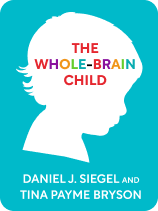

This article is an excerpt from the Shortform book guide to "The Whole-Brain Child" by Daniel J. Siegel and Tina Payne Bryson. Shortform has the world's best summaries and analyses of books you should be reading.
Like this article? Sign up for a free trial here .
How can you help children with trauma? What can you do to help your child process difficult memories and attain closure?
Since children’s brains are not yet fully developed, they have an added challenge of processing traumatic experiences and attaining closure. To help children with trauma, help them to make sense of the event by telling a story.
Here is how storytelling can help children process trauma.
Helping Children Cope With Trauma
If your child has been through a trauma, like a car accident, it is important to help her process the event and her emotions so that she can move forward, instead of fixating on an unresolved traumatic experience. To this end, help your child tell the story of the experience and how it made her feel.
When children learn to organize memories into stories and then share those stories, they can use those skills to work through difficult experiences for the rest of their lives. Research shows that storytelling—either verbally or through journaling—calms emotion-driven activity in the right brain.
When you help your child tell her story:
- Emphasize how the situation was resolved, which reassures your child that there’s a solution if the situation were to come up again.
- Talk about strategies to avoid a similar incident in the future (if applicable).
- Help your child create more positive associations with the thing or the place that has become scary; for example, if your child got sick at school and now is afraid to go back, remind her of everything she loves about school, such as her friends and favorite activities.
- Don’t force your child to retell the story if she’s not ready or not in the mood. Be aware of the time and place when you initiate the conversation.
- Be creative about how you apply this strategy. If your child resists talking, encourage her to write about the memory, draw a picture of it, or talk to a friend or trusted adult.
Tips for Helping Children Cope at Different Ages
Ages 0-3: Even before your child can talk, name emotions as often as possible. When you’re telling a story, you’ll need to do most of the narrating, and you may want to act out certain events.
Ages 3-6: Although your child’s verbal skills are well-developed, she may still need to lean on you to lead the storytelling when she’s upset. Start the story, and pause to give her an opportunity to pick it up from there.
Ages 6-9: At this age, your child can take the reins on storytelling, but she might still need you to nudge her along. As she narrates, ask questions to encourage her to fill in details.
Ages 9-12: Acknowledge how your child is feeling, then let her take the lead on the storytelling; your primary role is to ask questions to prompt the story, and to be patient and present as she tells it in her own way and her own time.

———End of Preview———
Like what you just read? Read the rest of the world's best book summary and analysis of Daniel J. Siegel and Tina Payne Bryson's "The Whole-Brain Child" at Shortform .
Here's what you'll find in our full The Whole-Brain Child summary :
- How to increase your child's self-awareness and emotional control
- Why the logical and emotional sides of the brain have to work together
- How to figure out why your child is afraid of something






